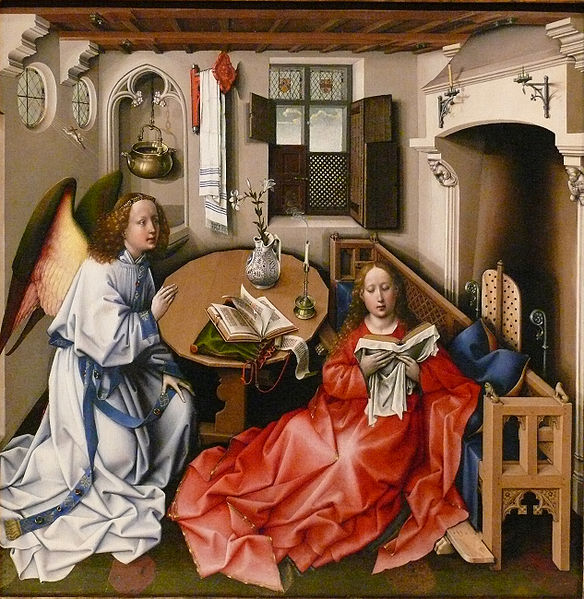
The mystery of the virgin conception and birth has done a lot of theologians’ heads in too, of course. Imagine then the difficulty for artists who tried to convey this scene, a very popular and often stunningly beautiful image in medieval and renaissance art. In this image from the workshop of Robert Campin, for instance, a tiny adult Christ, complete with crucifix, is surfing down a sunbeam towards Mary’s womb.

Sassetta’s paintings were heavily influenced by the teachings of Sienese mystics. As a landscape painter he moves along the most primitive lines. Backgrounds are composed of peculiarly jagged and bare cliffs, here and there a tree or plant sprouts. The picturesque fundamentals of the landscape, streams, valleys, hills, and woods are fanciful and quirky. The figures are not naturalistic in detail but more decorative in form. The beauty of a Sassetta painting lies in the great flow of line, the clear arrangements of groups, and the strict subordination of most detail. In order that the clearness of presentation might not suffer, he avoids all accessory figures, confining himself to a laconic expression of the spiritual content of his theme.
%20Oil%20Painting%20by%20Mark%20Rothko.jpg)
Rothko’s work is characterized by rigorous attention to formal elements such as color, shape, balance, depth, composition, and scale; yet, he refused to consider his paintings solely in these terms. He explained: It is a widely accepted notion among painters that it does not matter what one paints as long as it is well painted. This is the essence of academicism. There is no such thing as good painting about nothing.
I put these together for another thread, but what I was trying to say didn’t quite gel and seemed out of place. But I liked the juxtaposition and progression I managed to put together, so I’m posting it here - without commentary.